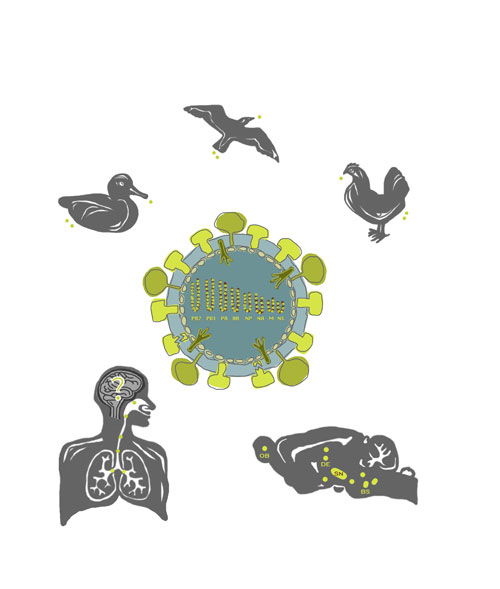|
Neurotropic Viruses
The central nervous system (CNS) provides an “immune-privileged” environment, which renders elimination of pathogens more difficult. On one hand, this may be a reason why infectious agents can reside in neurons for extended periods of time, or even most of the life span, of an individual. On the other hand, how can an infection be controlled in neurons and thereby avoid causing a lethal disease, and can a controlled neuronal infection affect brain functions? These questions apply also to neurons of the peripheral nervous system, which through their extensive axon terminal networks in epithelia are exposed to a large number of microbes and are known to harbor several latent infections.
In our project we are studying:
1. mechanisms by which an infection of neurons can be controlled in the peripheral as compared to the central nervous system;
2. long-term effects of viral infections targeted to the brain at different stages of its development on the expression of genes and on neurotransmitter systems, implicated in neuropsychiatric diseases, as well as on behavior of the host.

Fig 1: Avian flu (green) attacks upper brainstem and diencephalic nuclei in the mouse
|
In our studies on how different infectious agents can spread to the CNS and cause molecular, functional and behavioral changes we use amouse neuroadapted strain of influenza A virus, the WSN/33 strain. The reason for using this viral strain is that its interactions with the immune system are well characterized. Although it is mouse-adapted and no longer human pathogenic, the WSN/33 virus strain is closely related to the Spanish flu virus, which was recently reconstructed in the laboratory and found to be a uniquely high-virulence strain of the H1N1 subtype. The Spanish flu virus, most likely, passed once directly from birds to humans to cause the severe 1918-19 pandemic. The interest of studying neurotropic influenza viruses is emphasized by recent observations on the highly pathogenic avian influenza A virus strains of the H5N1 and H7N7 subtypes, which also can pass directly from birds to humans. Similar to the WSN/33 strain, these avian influenza subtypes have the propensity to invade the brain along cranial nerves to infect neurons in peripheral ganglia and then to target brainstem and diencephalic nuclei following intranasal instillation in both mice and ferrets.
The work on neurotropic viruses is performed by:
Linnea Asp
Simret Beraki
|